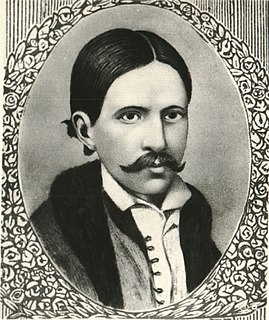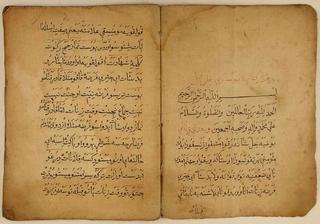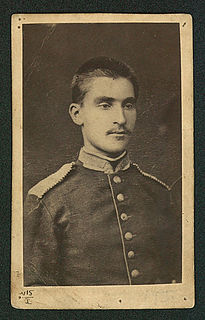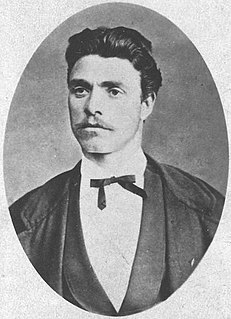 W
WAbdullah bin Saud Al Saud ruled the First Saudi State from 1814 to 1818. He was the last ruler of the First Saudi State and was executed in Constantinople under the Ottoman Empire. Although the Ottomans maintained several garrisons in the Najd thereafter, they were unable to prevent the rise of the Emirate of Nejd led by Turki bin Abdallah bin Muhammad bin Saud.
 W
WBenderli Ali Pasha was an Ottoman statesman. He was Grand Vizier of the Ottoman Empire.
 W
WBacho Kiro was the nickname of Kiro Petrov Zanev, a Bulgarian teacher, man of letters and revolutionary who took an active part in the April Uprising.
 W
WCyril VI, lay name Konstantinos Serpetzoglou was the Ecumenical Patriarch of Constantinople between the years 1813 and 1818.
 W
WAthanasios Nikolaos Massavetas also known as Athanasios Diakos was a Greek military commander during the Greek War of Independence, considered a venerable national hero in Greece.
Tsanko Hristov Dyustabanov was a Bulgarian revolutionary and participant in the April uprising of 1876.
 W
WMehmet Sait Halet Efendi (1761–1822) was an Ottoman diplomat and politician, ambassador to Paris from 1803 to 1806 and later the favourite and Inner Minister of the sultan Mahmud II. He was ambassador to the court of Napoleon I until 1806, and was succeeded in this role by Muhib Efendi, who was ambassador from 1806 to 1811.
 W
WKonstantinos Giannias was a Greek klepht who operated in the Peloponnese. Giannias was born in Prostovitsa, a village now known as Drosia in Achaia. He was the brother of Giannis Giannias.
 W
WGregory V, was Ecumenical Patriarch of Constantinople from 1797 to 1798, from 1806 to 1808 and from 1818 to 1821. He was responsible for much restoration work to the Patriarchal Cathedral of St George, which had been badly damaged by fire in 1738.
 W
WAbdulvehab Ilhamija Žepčevi was an 18th-century Bosnian dervish and prose writer.
 W
WGeorgi Dimitrov Izmirliev, nicknamed Makedoncheto, was a Bulgarian revolutionary and public figure. A participant in the anti-Ottoman April Uprising of 1876, he was an assistant to Stefan Stambolov and a military commander of the Tarnovo revolutionary district.
 W
WStefan Karadzha, was a Bulgarian national hero, a revolutionary from the national liberation movement and a prominent leader of rebellion against the Ottoman Empire.
 W
WArchbishop Kyprianos of Cyprus was the head of the Cypriot Orthodox Church in the early 19th century at the time that the Greek War of Independence broke out.
 W
WVasil Levski, born Vasil Ivanov Kunchev, was a Bulgarian revolutionary and is a national hero of Bulgaria today. Dubbed the Apostle of Freedom, Levski ideologised and strategised a revolutionary movement to liberate Bulgaria from Ottoman rule. Levski founded the Internal Revolutionary Organisation, and sought to foment a nationwide uprising through a network of secret regional committees.
 W
WAhmed Şefik Midhat Pasha was an Ottoman democrat and one of the leading statesmen during the late Tanzimat period. He is most famous for leading the Ottoman constitutional movement of 1876 and introducing the First Constitutional Era, but was also a leading figure of reform in the educational and provincial administrations. He was part of a governing elite which recognized the crisis the Empire was in and considered reform to be a dire need. Midhat Pasha is described as a person with a liberal attitude and is often considered as one of the founders of the Ottoman Parliament.
 W
WDimitar Obshti was a 19th-century Bulgarian revolutionary, who fought for the liberation of Bulgaria, Serbia and Crete from the Ottoman Empire, as well as for the Risorgimento of Italy.
 W
WSelim III was the Sultan of the Ottoman Empire from 1789 to 1807. Although regarded as an enlightened ruler, the Janissaries eventually deposed and imprisoned him, and placed his cousin Mustafa on the throne as Mustafa IV. Selim was subsequently killed by a group of assassins.
 W
WThymios Vlahavas was a Greek klepht.